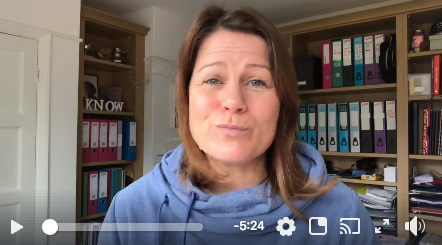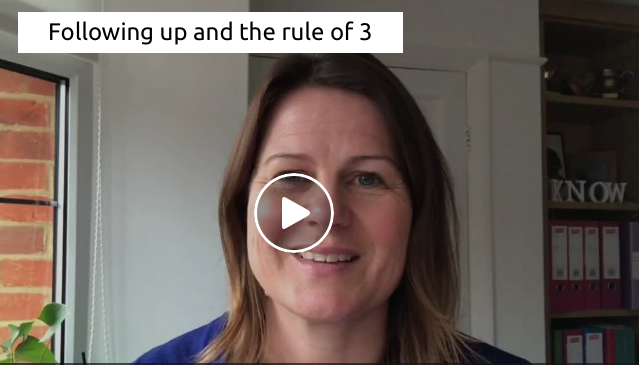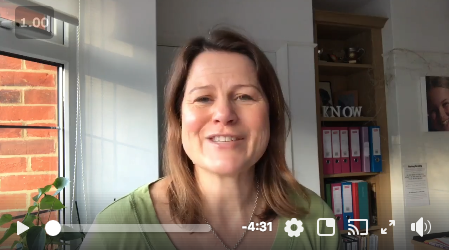
List building and how to stop falling into Alice’s rabbit hole
List building and how to stop falling into Alice’s rabbit hole
List Building; a topic that I know you realise is important for your marketing but often a topic that is overcomplicated and focused on tactics, rather than strategy.
So today, I want to give you 3 key questions to answer which will help you find answers to your tactical questions such as what email marketing system do I need or what should I put in a lead magnet?
List building and how to stop falling into Alice's rabbit hole ????????
List building. A topic that I know you realise is important for your marketing but often a topic that is overcomplicated and focused around tactics, rather than strategy. Here are 3 questions to answer which will help you decide on your tactics, such as where you go list build, what lead magnet will work and what to send people once they are on your list.
Posted by Karen Skidmore – True Profit Business on Wednesday, March 21, 2018
In this world of funnels and plethora of digital tools, it easy to find yourself falling into Alice’s rabbit hole. But for most businesses like yours, it really doesn’t need to be that overwhelming.
Marketing – any marketing activity whether that’s list building or content creation or running seminars or events – needs to follow three stages: Diagnosis, Strategy and then Tactics.
To enable you to know what you should be doing to list build, you have to be clear on what your list building strategy is going to be.
And I promise you, it can be very simple.
Answer these 3 questions to help you decide what’s going on for you and then this will show you how you need to go about building a list of interested prospects for your business.
Question One: Why are you list building?
The obvious answers maybe because you’ve been told that you have to and that a marketing list is an asset for your business. Without a list, it’s like standing on a street corner, handing out business cards and hoping someone stops and talks to you.
But think a little more deeply about this question because what you sell and the way that you sell it will dictate what you actually need to do tactically to list build.
Most businesses fit into one of three camps.
1. Sell by clicks. You have digital or physical products that require someone to go to a web page and click a link to enable them to purchase what you have to sell. For the sort of the clients I work with, these sales may include an online course or membership site – they are running a digital e-commerce business and thus rely on lots of people visiting a web page in order to convert a percentage to become customers.
2. Sell by conversation. You are a service provider and the way your customers buy from you involves some kind of human interaction, Whether that involves a formal pitch or presentation or a face to face meeting or over the phone consultation, for someone to buy from you, they need to have dealt with you (or someone on your sales team) in person. So although you still need enquiries and prospects to make your sales, it’s about quality rather than quantity.
3. Hybrid of the two. Some of you will be selling lower-priced digital products but the core of your profits come from selling higher priced service-based programmes or consultancy. So you are using your selling by clicks process as a way of qualifying your leads. We would call these products Prospect Products because although you are creating an income, they aren’t your core revenue source.
So understand what you are selling and how you are selling it and how this relates to what your list building objectives are.
Because if you are selling by conversation – which a lot of you who read my articles and watch my vlogs are – it’s not about using tactics to get thousands upon thousands of email subscribers.
You can ignore a lot of the shiny shiny online marketing tools, such as FB Messenger Bots and Instagram ads and focus your list building around tactics on showcasing your expertise such as speaking or writing a book.
Question Two: Who do you want on your list?
Profiling your ideal customer is marketing 101.
Very few small business owners spend any time on this and yet it’s critical to all marketing that you do.
If you know who you want, you’ll know exactly where to list build. Just because there is a tonne of list building experts that seem to tell you Facebook is the go-to place to build list, doesn’t necessarily mean it’s right for YOU.
Know who you want to attract and then work out what media they read, where they hang out and who they talk to. That’s where you want to list build. Not from a knee-jerk Facebook ad campaign.
Question Three: Why does someone want to be on your list?
Just because list building is important to you, doesn’t mean that your potential customer sees it the same way. The more you know about your ideal customer, the more evidence and clues you are going to get about what it is exactly they want from you.
What topics do they really want to know about? What format do they want that in? How often do they want to hear from you?
By spending time on answering these three questions, you are going to get really clear on exactly what tactics are important to you and your business.
Don’t just follow the next list building expert’s advice about what to do. There are a tonne of courses and free resources out there but most of what’s being talked about in the world of small business marketing are the digital marketing strategies which focus on tactics for a sell-by-click business rather than a sell-by-conversation business.
These tactics aren’t ever as easy as the gurus make out it to be because let’s be honest here … there’s no such thing as a magic bullet nor is there a guarantee that you’ll the promised results from following the guru’s formula or cookie-cutter system if you aren’t selling the same priced product to the same marketplace as the guru.
Many of the digital marketing tactics are of course completely possible but you have to ask yourself, is the latest digital list building tactic really the right thing to be spending your money, time and energy on if they aren’t solving the list building problem of YOUR business?
Answer these three questions I’ve outlined in this post and focus on your strategy first, before tactics.










